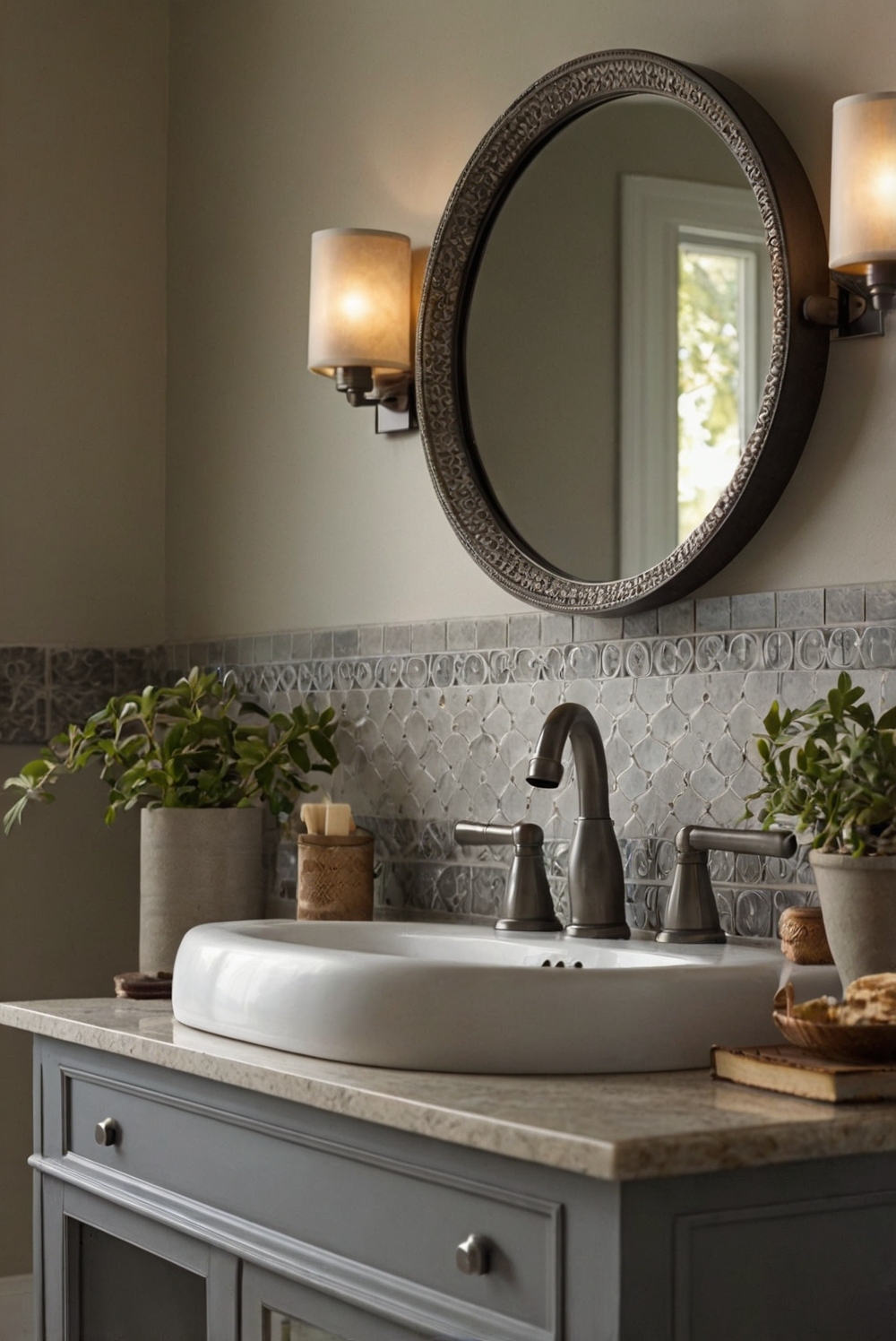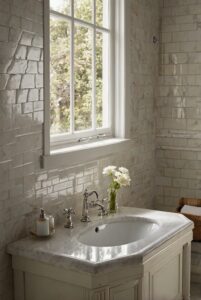Discover the benefits of incorporating an undermount sink into your bathroom design. Explore tips on styling and enhancing your space with this sleek and functional feature.
What are the advantages of using an undermount sink in the bathroom?
Undermount sinks in bathrooms offer a sleek and modern look, easier cleaning, more countertop space, and prevent water spills and splashing onto the floor. They also allow for seamless integration with the countertop material, enhancing the overall aesthetics of the space.
To maintain the undermount sink, regular cleaning and proper sealing are essential to prevent water damage. Choosing a high-quality sink and professional installation can mitigate any potential risks and ensure long-lasting functionality.
Advantages of Using an Undermount Sink in the Bathroom:
1. Enhanced Aesthetic Appeal:
An undermount sink offers a sleek and modern look to any bathroom. By being mounted underneath the countertop, it creates a seamless and clean line, enhancing the overall aesthetic appeal of the space. This design choice can elevate the bathroom’s style and make it look more luxurious and sophisticated.
2. Easy Clean-Up:
One of the main advantages of an undermount sink is the ease of cleaning. Since there is no lip or rim where dirt and grime can accumulate, cleaning becomes a breeze. Simply wipe down the countertop and push any debris directly into the sink without any obstructions. This makes maintaining cleanliness in the bathroom much simpler and more efficient.
3. Maximizes Counter Space:
Another significant advantage of using an undermount sink in the bathroom is that it maximizes counter space. Because the sink is mounted underneath the countertop, it does not take up any extra room on the surface. This allows for more usable space on the countertop for toiletries, decorations, or other essentials, making the bathroom more functional and organized.
Additional Benefits of Undermount Sinks:
4. Leak Prevention:
Undermount sinks are sealed to the underside of the countertop, which helps prevent leaks and water damage. The lack of a visible rim eliminates the risk of water seeping into the edges and causing deterioration over time. This added protection can prolong the lifespan of your bathroom fixtures and prevent costly repairs down the line.
5. Versatile Design Options:
Undermount sinks come in a variety of shapes, sizes, and materials, allowing for more design flexibility in the bathroom. Whether you prefer a sleek stainless steel sink or a classic porcelain option, there are numerous choices available to suit your style preferences. This versatility makes it easier to create a customized and personalized look for your bathroom.
In conclusion, the advantages of using an undermount sink in the bathroom are numerous and can greatly enhance the functionality and aesthetics of the space. From easy clean-up to maximizing counter space, undermount sinks offer practical benefits that make them a popular choice among homeowners. By considering the additional advantages such as leak prevention and versatile design options, you can make an informed decision when selecting a sink for your bathroom that aligns with your needs and preferences.
1. Why should I choose an undermount sink for my bathroom?
Undermount sinks offer several advantages compared to traditional drop-in sinks. They provide a sleek and modern look to your bathroom, as the sink is mounted underneath the countertop, creating a seamless appearance. This design also makes cleaning easier, as there are no crevices for dirt and grime to accumulate. Additionally, undermount sinks maximize countertop space and allow for easier installation of faucets and other bathroom accessories. They are also more durable than drop-in sinks, as the edges are protected by the countertop, reducing the risk of chipping or cracking. Overall, choosing an undermount sink can enhance the aesthetic appeal and functionality of your bathroom.
2. How do undermount sinks compare to other types of bathroom sinks?
Undermount sinks are often preferred over top-mount or vessel sinks for their clean and modern appearance. Top-mount sinks sit on top of the countertop, creating a more traditional look, while vessel sinks are installed above the countertop, which can be more challenging to clean. Undermount sinks offer a seamless and contemporary look, as they are mounted underneath the countertop, creating a smooth transition from sink to counter. They also provide more countertop space and make cleaning easier. While undermount sinks may require professional installation due to their unique mounting method, the benefits they offer in terms of aesthetics and functionality make them a popular choice for bathroom design.
3. Are undermount sinks more expensive than other types of sinks?
Undermount sinks can be more expensive than top-mount sinks due to their installation method and the materials used. The process of mounting an undermount sink typically requires additional support structures beneath the countertop, which can increase the overall cost of installation. Additionally, undermount sinks are often made of higher-quality materials, such as stainless steel or porcelain, which can also contribute to a higher price point. However, the long-term benefits of undermount sinks, such as their durability, ease of cleaning, and modern aesthetic, may outweigh the initial cost for many homeowners. Ultimately, the decision to choose an undermount sink should be based on your budget and your design preferences.
4. Can undermount sinks be installed in any type of bathroom countertop?
Undermount sinks are compatible with a variety of countertop materials, including granite, marble, quartz, and solid surface. However, it is important to note that not all countertops are suitable for undermount sink installation. Some laminate or tile countertops may not be able to support the weight of an undermount sink or may require additional reinforcement to prevent damage. Additionally, the type of sink you choose will also impact the installation process. For example, some undermount sinks are designed for specific countertop materials or configurations, so it is essential to consult with a professional installer to ensure compatibility. Overall, undermount sinks can be installed in most bathroom countertops, but careful consideration of the materials and installation requirements is necessary to achieve the best results.
5. Are undermount sinks easy to clean and maintain?
Undermount sinks are generally easier to clean and maintain compared to other types of sinks. The seamless design of undermount sinks eliminates the lip or edge that is present in top-mount sinks, where dirt and grime can accumulate. This makes cleaning an undermount sink a more straightforward task, as there are no crevices or seams to scrub. Additionally, undermount sinks are typically made of durable materials that are resistant to stains, scratches, and chipping, which helps maintain their appearance over time. Regular cleaning with mild soap and water is usually sufficient to keep an undermount sink looking its best. Overall, the ease of cleaning and maintenance is a significant advantage of undermount sinks, making them a popular choice for modern bathroom design.




